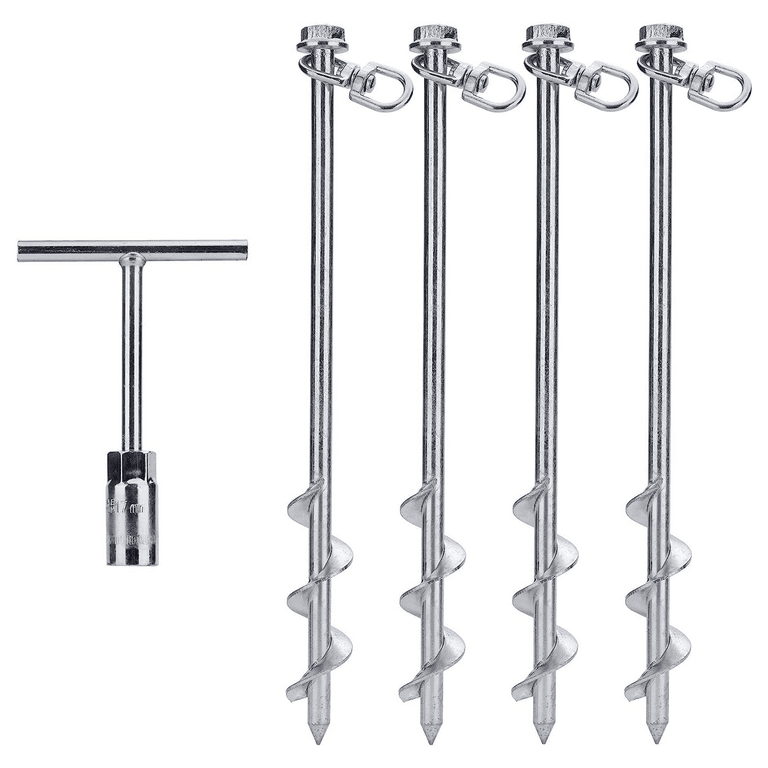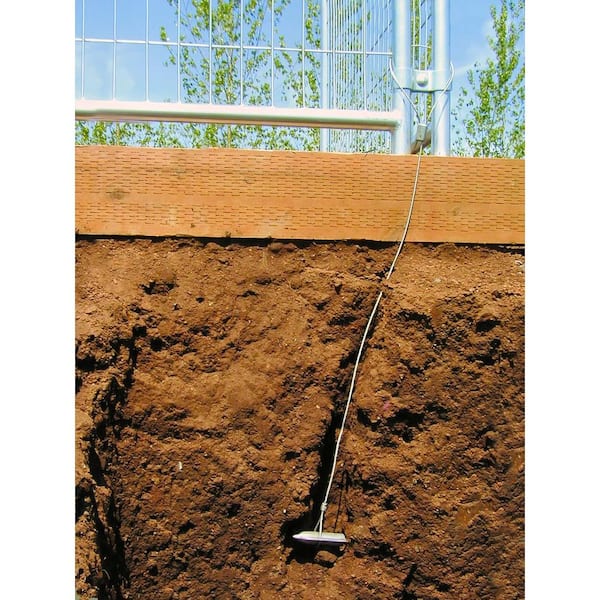The Latest Innovations in Ground Anchor Technology and Their Impact
The Latest Innovations in Ground Anchor Technology and Their Impact
Blog Article
Discover the Various Sorts Of Ground Support for Your Following Job
From auger supports, which stand out in diverse soil conditions, to risk anchors created for short-term installations, the options are countless. Additionally, concrete and screw anchors present unique benefits in particular situations, while deadman anchors are customized for applications needing resistance to side pressures.

Auger Anchors
Auger anchors are a prominent option in different construction and landscaping tasks due to their distinct layout and effective securing abilities. These supports include a helical screw-like shaft that is driven into the ground, enabling for a secure and secure hold. The spiral style promotes easy setup and optimizes resistance versus side forces, making auger anchors particularly efficient in applications such as secure fencing, short-lived frameworks, and disintegration control.
The setup process of auger supports is relatively simple. They can be by hand or mechanically mounted, relying on the dimension and required depth. This versatility enables their usage in varied dirt conditions, from sandy to clayey terrains. Auger supports can be conveniently gotten rid of and reused, which adds to their cost-effectiveness and sustainability.
One of the considerable advantages of auger supports is their ability to disperse tons equally across the bordering dirt, decreasing the danger of soil disturbance and lessening environmental influence. Furthermore, they are much less at risk to heaving or loosening up with time contrasted to standard securing methods. Auger supports are an excellent selection for projects needing reputable and long lasting anchoring solutions.

Stake Anchors
When it involves safeguarding structures in a variety of outside applications, risk anchors supply a simple and trusted service. These supports are generally constructed from long lasting products such as steel or aluminum, made to endure ecological stress and anxieties while providing optimal security. Their simple style permits quick installation, making them a suitable selection for momentary or irreversible anchoring demands.
Risk supports are especially useful in securing outdoors tents, covers, and various other light-weight structures versus wind and weather condition. They function by being driven into the ground at an angle, producing a solid hold that stands up to pull-out forces - Ground Anchor. The efficiency of risk anchors depends on several variables, consisting of dirt kind, dampness material, and the angle of installation
For included safety, lots of stake supports come with attachment points for ropes or bands, enabling for stress changes as needed. In applications such as landscape design or building, they can successfully maintain equipment or frameworks on uneven surface. Overall, risk supports supply a cost-efficient and functional remedy for safeguarding numerous outside installations, making them a favored selection for specialists and do it yourself fanatics alike.
Concrete Anchors
Concrete anchors offer a robust service for protecting frameworks to concrete surfaces, guaranteeing security and safety in various applications. These anchors are crucial for tasks varying from property building and constructions to large commercial installments. They are available in different kinds, including development supports, glue anchors, and undercut supports, each developed for certain tons demands and environmental conditions.
Growth anchors rely upon mechanical devices to hold the concrete when installed. They are suitable for medium to heavy-duty applications. Glue anchors make use of high-strength epoxy or material to bond the support to the concrete, offering superior load-bearing capacities, have a peek at these guys especially in fractured concrete scenarios. Undercut anchors produce a distinct form within the concrete, giving phenomenal holding power, especially in applications where tensile tons are common.
When carried out properly, concrete supports dramatically boost the structural stability of various jobs, making them indispensable in contemporary construction practices. Understanding the particular needs of your project will assist in picking the right type of concrete support for the task.
Screw Anchors

Screw anchors are a functional securing service that can be efficiently used in a range of applications where typical concrete anchors may not suffice. These supports are composed of a helical style that enables them to be easily driven into the ground, making them excellent for usage in dirt and other substratums. Their unique structure offers exceptional holding power and resistance to pull-out pressures, making them ideal for numerous jobs, from landscaping to structural support.
One of the primary advantages of screw anchors is their simplicity of installment. They need minimal devices and can typically be mounted without the demand for excavation, which saves both time and labor prices. Furthermore, screw supports can be removed and reused, supplying a lasting remedy for short-term applications.
Screw supports are especially helpful in locations where dirt conditions are challenging, such as sandy or loose dirts. Their capability to be set up at varying depths permits for customization based upon particular project demands. Generally, screw anchors provide a trustworthy and reliable securing approach, making them an outstanding choice for professionals and engineers seeking efficient solutions for their projects.
Deadman Anchors
Deadman anchors work as a durable solution for maintaining structures in challenging conditions, particularly where standard securing approaches might fail. These anchors consist of big, heavy things buried underground, which create resistance against lateral forces. The layout generally involves a horizontal component, such as a block of concrete or a steel plate, buried in the dirt, to which straps or cables are attached.
The effectiveness of deadman anchors exists in their ability to distribute tons over a bigger area, lowering the threat of failing in unsteady dirt problems. They are particularly advantageous in applications such as retaining walls, short-lived structures, and slope stablizing, where dirt movement can endanger the honesty of the structure.
Setup of deadman anchors requires cautious planning to ensure they are positioned at the appropriate deepness and orientation, optimizing their load-bearing capacity. While they might need more labor and product than light-weight anchors, their integrity in negative problems makes them important for long-term projects. Deadman supports are flexible and can be adjusted to various applications, making them a go-to choice for engineers dealing with one-of-a-kind challenges in their jobs.
Verdict
In recap, picking the appropriate type of ground support is essential for making sure security and safety in different projects. Auger anchors succeed in diverse dirt conditions, while risk supports fit momentary applications. For concrete surface areas, development and sticky supports give reputable options, and screw supports provide flexibility in challenging terrains. Deadman anchors are particularly effective in resisting lateral forces for preserving wall surfaces. Cautious consideration of these choices will certainly enhance task outcomes and architectural stability.
In addition, concrete and screw supports existing unique benefits in specific situations, while deadman supports are Continue tailored for applications requiring resistance to lateral pressures - Ground Anchor.Auger supports are a popular selection in various building and landscaping projects due to their unique style and effective securing capabilities. They come in various types, including development anchors, glue anchors, and undercut anchors, each developed for certain load needs and environmental conditions
Adhesive supports use high-strength epoxy or resin to bond news the anchor to the concrete, supplying exceptional load-bearing capacities, especially in cracked concrete situations. On the whole, screw supports give a efficient and trustworthy securing approach, making them an exceptional selection for contractors and engineers seeking effective services for their jobs.
Report this page